What Causes a Stroke? Understanding the Symptoms and Risk Factors
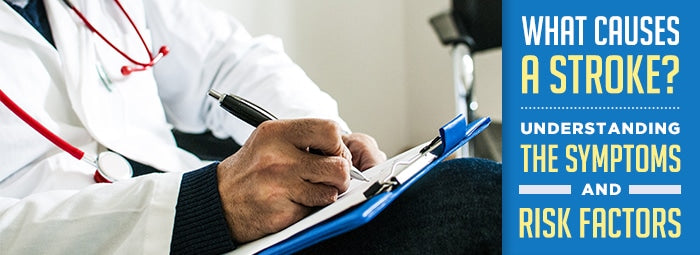
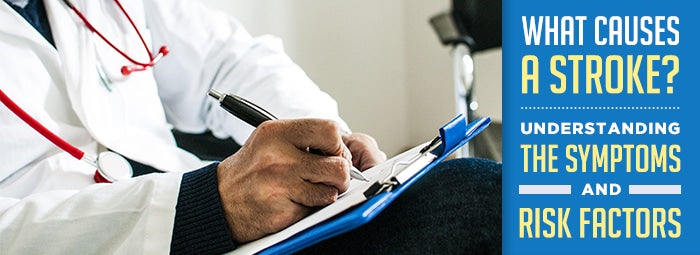
The idea of a stroke can be frightening because it comes without warning and can cause a number of life-altering disabilities. Unfortunately, nearly 800,000 people will experience a new or recurrent stroke every year, and stroke is a leading cause of disability in the United States.
While stroke is a leading cause of disability, it is also the leading cause of preventable disability. In fact, research shows that up to 80 percent of strokes could have been prevented.
By understanding the root causes of a stroke you can minimize your risk of having one. Below, we cover the different types of strokes that can occur as well as their causes and risk factors, so you can be better educated on how to recognize and prevent them.
Types of Strokes
Many people think of a stroke as one kind of medical emergency, but there are actually three different types of stroke:
1. Hemorrhagic Stroke
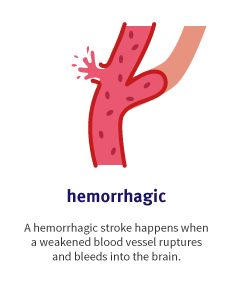
Hemorrhagic strokes occur when a weakened blood vessel ruptures and bleeds into the rest of the brain. This causes a compression of the brain tissue when the blood accumulates. It’s the second most common kind of stroke.
There are two classifications of weakened blood vessels that will lead to a hemorrhagic stroke:
- Aneurysm. Swelling of a weak region of a blood vessel. This will continue to deteriorate until it ruptures.
- Arteriovenous malformation. A region of blood vessels that are formed abnormally. These abnormal blood vessels can rupture and bleed out into the brain.
2. Ischemic Stroke
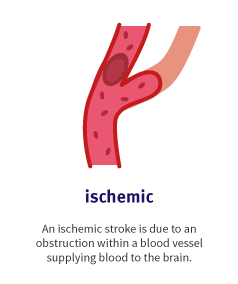
An Ischemic stroke is the most common type of stroke. It occurs due to a blood-vessel obstruction in a region of the brain. This will typically happen because of a condition known as atherosclerosis. Atherosclerosis leads to the development of fatty tissues lining the blood-vessel walls.
When a piece of this fatty tissue breaks free, two events can occur that lead to a stroke:
- Cerebral thrombosis. A blood clot develops, clogging part of the blood vessel.
- Cerebral embolism. When a blood clot that forms in a different region of the body travels to the brain’s blood vessels, where it becomes too large to pass through.
3. Transient Ischemic Stroke
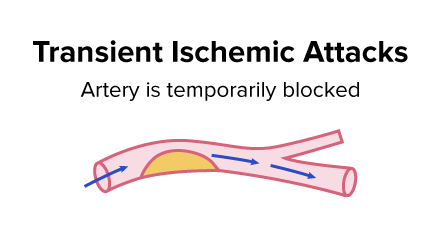
A Transient Ischemic Stroke is also called a mini-stroke or a TIA (Transient Ischemic Attack). It should be seen as a warning stroke because it is a sign that a full-blown stroke may strike in the future.
This kind of stroke is caused by a clot that enters the brain. A TIA usually lasts no longer than a minute, and the symptoms will be short-lived as well. It leaves no lasting damage to the brain.
Symptoms of a Stroke
It’s important to be able to recognize the symptoms of a stroke as soon as possible. The quicker you can spot them, the sooner you’ll receive medical attention and the better your chances of recovery are.
The symptoms are generally the same regardless of the type of stroke. The F.A.S.T. guide is an easy way to remember the signs of a stroke and check on a possible stroke victim.
- Face drooping. Typically, one side of the face will droop or become numb. Ask the person to smile. If it’s uneven, that’s a sign.
- Arm weakness or numbness. A stroke will leave one arm weak or numb, making it difficult for a person to hold both arms up at the same level. See if one arm stays lower than another.
- Speech difficulty or slurred speech. A stroke causes confusion and makes it hard to understand speech. Check on whether the victim can repeat a simple sentence clearly.
- Time to call 9-1-1. As soon as you recognize these symptoms, call 9-1-1. Even if these symptoms are only temporary, get the sufferer proper treatment. Keep in mind the exact time the symptoms started so you can reference it later.
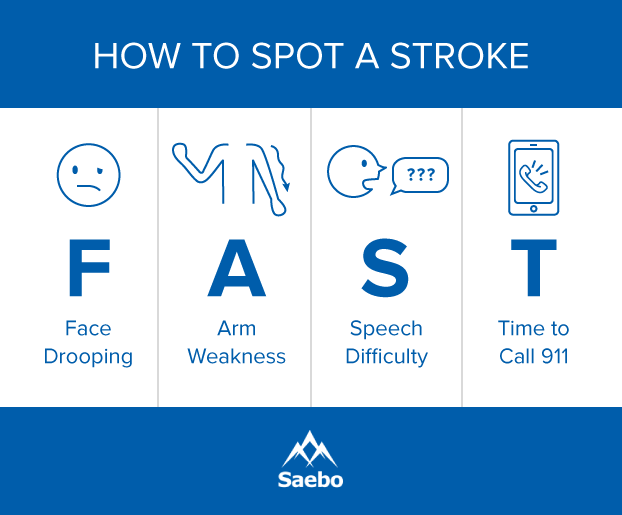
Stroke Risk Factors
A stroke can happen at any time, but if an individual has any of the risk factors below, their likelihood of experiencing one is higher.
Keep in mind, there are several major risk factors that lead to a stroke. This list includes common ones that can also lead to heart attack. In the final section, we discuss the way to minimize these risk factors.
1. Lifestyle Risk Factors

Lifestyle risk factors have to do with your habits and the way you live in general. If your lifestyle includes any of the following, your risk for stroke is higher:
- inactive lifestyle with little exercise or movement
- heavy or binge drinking on a regular basis
- being overweight or suffering from obesity
- using illicit drugs that raise heart rate, such as methamphetamines and cocaine
- smoking cigarettes or regularly being exposed to secondhand smoke
2. Medical Risk Factors

If you’re currently suffering from any of the following medical ailments, you have increased risk for stroke:
- high blood pressure or cholesterol
- existing diabetes
- existing cardiovascular diseases, like heart defects, heart failure, or abnormal heart rhythm
- obstructive sleep apnea
3. Genetic Risk Factors

Unfortunately, some people inherit a higher risk of stroke, despite lifestyle and medical factors. The most common genetic risk factors are:
- having a family or personal history of stroke or heart attack
- being male. Generally, stroke risk for men is much higher than it is for women. However, women typically have strokes when they’re older and are more likely to die during a stroke.
- certain birth control and hormone-related therapies
- being African American. African Americans have a higher risk of stroke than other races do.
Reducing Your Risk of Stroke
The best way to prevent strokes is to minimize the risk factors detailed above. Some risk factors, such as genetics, family history, or having pre-existing medical conditions, can’t be helped.
Fortunately, there are medical conditions that can be treated and lifestyle factors changed to reduce the likelihood of stroke.
Common ways of decreasing your stroke risk that are under your control include:
- living an active lifestyle and exercising on a consistent basis
- quitting smoking (if you’re currently a smoker)
- quitting drinking (or greatly reducing alcohol consumption)
- losing weight through dieting
All content provided on this blog is for informational purposes only and is not intended to be a substitute for professional medical advice, diagnosis, or treatment. Always seek the advice of your physician or other qualified health provider with any questions you may have regarding a medical condition. If you think you may have a medical emergency, call your doctor or 911 immediately. Reliance on any information provided by the Saebo website is solely at your own risk.
All content provided on this blog is for informational purposes only and is not intended to be a substitute for professional medical advice, diagnosis, or treatment. Always seek the advice of your physician or other qualified health providers with any questions you may have regarding a medical condition. If you think you may have a medical emergency, call your doctor or 911 immediately. Reliance on any information provided by the Saebo website is solely at your own risk.



